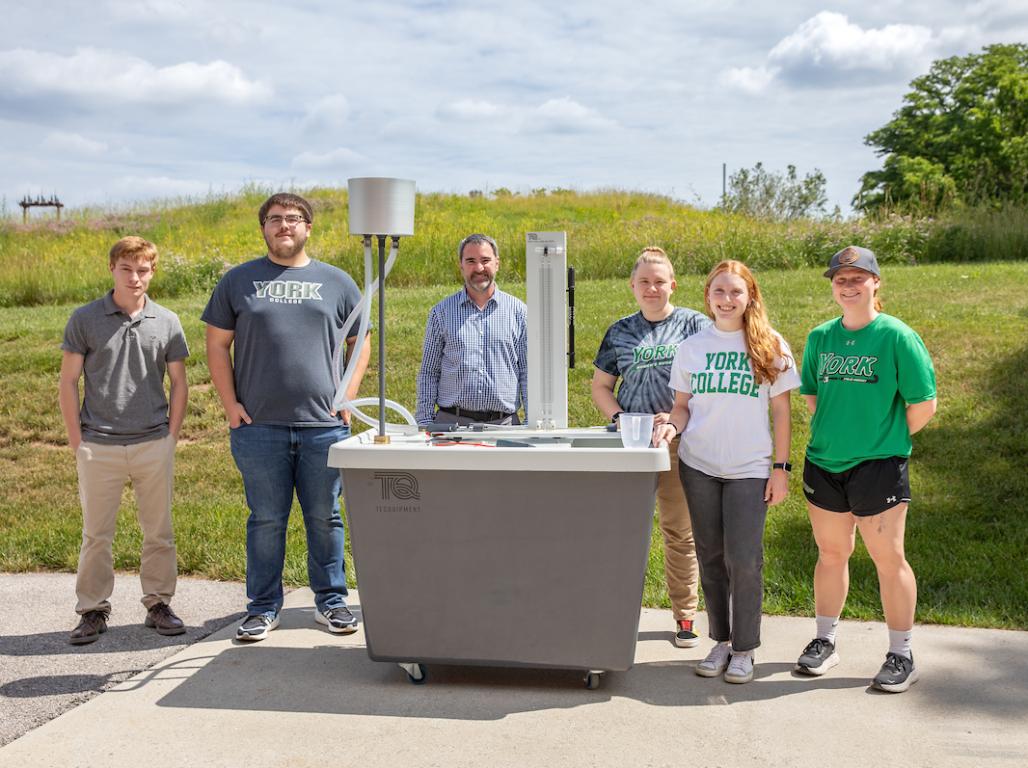Designed for Action: YCP Students Become Published Researchers

At York College, students aren’t just reading textbooks and listening to lectures.
They’re working on community projects, solving real-world problems, and using their education to effect change. In Designed for Action, we meet the students who are making an impact outside the classroom.
Most researchers have worked in their field for years, or at least started graduate school, before becoming published authors. For three Intelligence Analysis majors at York College of Pennsylvania, that seemed like too long of a wait.
As part of the Fall 2021 Intelligence Analysis National Security class, students participated with Professors John Weaver and Jennifer Pomeroy on a book project, Intelligence Analysis: Domestic and Foreign Threats Confronting the Biden Administration. Seniors Jason Bratcher, Rebekah Dodson, and Nitzi Salinas-Gaitan were lead chapter authors working with teams of students on the book, which will most likely be published in the summer of 2022.
Going Beyond a Google Search
The professors wrote two chapters while students in the class prepared seven chapters focusing on intelligence and national security issues, such as “Threats to the Homeland,” “Russia’s Threat to the National Security of the United States,” “Overview of China’s Threat to the National Security of the United States,” and “North Korea and Its Threats to U.S. National security.” And they quickly discovered that real-world research takes more than a few keystrokes.
“News sources could not be used as sources,” explains Jason, whose chapter focused on currently unfolding events in Russia. Chapter authors consulted a variety of fact-based, firsthand resources like transcripts, press releases, journals, books, government documents, and testimonies.
“It has helped me improve my research and writing skills,” adds Nitzi. “For my chapter, I have to focus on researching and analyzing how and why North Korea is a threat to the United States, from North Korea’s point-of-view.”
The research method used in the class encourages students to look at security threats from an unusual angle—inside the enemy’s mind. “We, as researchers, take on the perspective of the adversary to understand the weaknesses the U.S. faces,” says Rebekah. Her group’s work examined issues of homeland security, including lone actors, hostile states, cyber threats, and organized crime. “Those four areas are what we believed were the most serious threats faced by the U.S. homeland. The project itself then involved intense research, synthesis and analysis, writing, and then lots of editing.”
Next Steps
When the book is published, the students’ work will be available to prominent figures in the intelligence community. Key audiences for the publication include the 18 members of the United States intelligence community, members of the U.S. National Security Council, allies of the United States, nongovernmental organizations (NGOs) looking to provide support abroad, and private sector companies considering expanding their operations overseas.
For undergraduates just starting out in their careers, it’s an incredible résumé-building opportunity. “Book chapter publications are uncommon for undergraduate students,” Jason says. “Since [this project] is published, it allows students to go through the editing process and understand how to look at their work more closely.”
Rebekah and Nitzi agree that working on a professional research publication was a valuable experience—and one that will stay with them in the long term.
“These are important skills to apply to a career in the intelligence community,” says Rebekah. “I am most proud of being able to contribute to the intelligence analysis field as an undergraduate student.”



